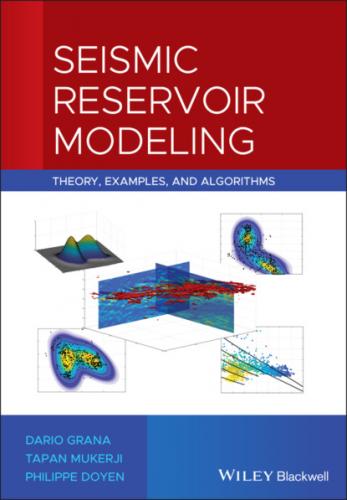1.5 Functions of Random Variable
In some applications, we might be interested in transformations of random variables, or, in other words, in the response of a function of a random variable. For example, in reservoir modeling, we might be interested in the permeability distribution, and because of the lack of direct measurements, we estimate the distribution as a function of the distribution of another random variable, for example, porosity.
Figure 1.12 Beta probability density function in the interval [0, 1]: the solid line (convex curve) represents a Beta distribution with parameters α = β = 0.1, whereas the dashed line (concave curve) represents a Beta distribution with parameters α = β = 2.
If the transformation is linear, then the shape of the distribution of the linear response is the same as the distribution of the initial random variable. For example, if the distribution of the initial random variable is Gaussian, then the distribution of the predicted random variable is also Gaussian. As shown in Section 1.4.3, a Gaussian distribution is fully described by its mean and variance; therefore, to compute the PDF of the transformed variable, we simply compute the mean and the variance of the transformed distribution.
For example, if X is distributed according to a Gaussian distribution
and variance
If X is distributed according to a uniform distribution on the interval [c, d], X ∼ U([c, d]), and we apply a linear transformation Y = g(X) = aX + b, then Y is still distributed according to a uniform distribution Y ∼ U([ac + b, ad + b]), on the interval [ac + b, ad + b].
These results are intuitive because if we apply a linear transformation to a distribution, we shift the mean and change the variance, but we do not distort the shape of the distribution. For example, if we assume that porosity is distributed according to a Gaussian distribution (neglecting low probability values for porosity values outside the physical bounds), and we apply a linear rock physics model (Chapter 2) to compute the corresponding P‐wave velocity distribution, then the distribution of P‐wave velocity is still Gaussian and we can compute the mean and the variance using Eqs. (1.44) and (1.45).
If the transformation is not linear, an analytical solution is not always available. A numerical method to obtain an approximation of the probability distribution of the random variable of interest is the Monte Carlo simulation approach. A Monte Carlo simulation consists of three main steps: (i) we generate a set of random samples from the known input distribution; (ii) we apply a physical transformation to each sample; and (iii) we estimate the distribution of the output variable by approximating the histogram of the computed samples. Monte Carlo simulations are often applied in geoscience studies to quantify the propagation of the uncertainty from the input data to the predicted values of a physical model.
1.6 Inverse Theory
In many subsurface modeling problems, we cannot directly measure the properties of interest but can only collect data indirectly related to them. For example, in reservoir modeling, we cannot directly measure porosity far away from the well, but we can acquire seismic data that depend on porosity and other rock and fluid properties. Geophysics generally provides the physical models that link the unknown property, such as porosity, to the measured data, such as seismic velocities. Therefore, the estimation of the unknown model from the measured data is, from the mathematical point of view, an inverse problem.
If m represents the unknown physical variables (i.e. the model), d represents the measurements (i.e. the data), and f is the set of physical equations (i.e. the forward operator) that links the model to the data, then the problem can be formulated as:
where ε is the measurement error associated with the data. The data d can be a function of time and/or space, or a set of discrete observations. When m and d are vectors of size nm and nd, respectively, then f is a function from
In the case of a linear inverse problem with a finite number of measurements
